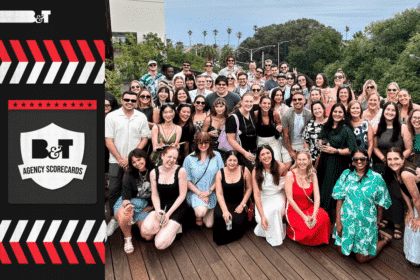In this guest article, Jerome Tillotson (SVP EMEA & APAC client success, Cheetah Digital) is here to walk you through some of the key talking points from a recent interview with PepsiCo head of martech, Chris Muscutt.
Chris Muscutt, head of martech at PepsiCo, has had an interesting professional journey. In fact, his marketing career took off as an air traffic controller – “It was my job to figure out how to pick up planes from radars and then crosstalk them into a central data model, so they could be tracked and communicated with. Unknowingly, I was in the prerequisites of marketing back then,” he told Tim Glomb, VP of content and data at Cheetah Digital, in a special edition of the ‘Thinking Caps’ podcast.
From there, Muscutt went on to global energy and petrochemical behemoth Shell where he was instrumental in the company’s digital transformation. Today at PepsiCo, Chris says he’s in a similar role, figuring out how to best use marketing technology to continually “surprise and delight” consumers.
Leveraging intelligence in a cookie-less world
In the digital age, innovative technology must be leveraged to power an efficient and effective relationship marketing strategy.
For years, brands have been perfecting personalisation strategies that resonate with consumers and make them feel like individuals. For many B2C brands like PepsiCo, classic personalisation has meant plugging simple forms of data like email, names, addresses or recent purchases into outbound channel communications to ensure touchpoints are viewed as timely, relevant and contextual.
Personalisation marketing tools rushed on the scene more than 15 years ago to help marketers more effectively engage with consumers in digital channels like web, social and mobile. These tools help marketers test out different colours, icons, images and offers on websites to optimise the consumer journey.
However, rarely did they offer any meaningful psychographic intelligence about visitors like their interests, hopes or needs. The cookie apocalypse and browser-based targeting solutions further contribute to the challenge of getting to know the customer, with Google announcing its plans to phase out third-party cookies altogether.
“Marketers have to look at all the different signals they’re receiving from consumers, even the more subtle ones, as the third-party cookie crumbles,” Muscutt said. “They have to prioritise the data that is useful in their marketing strategies and then focus on developing those data-collection opportunities. With that, marketers can start to build impactful strategies, which can improve the customer journey.”
Despite the challenges, getting personalisation right remains a massive opportunity for brands, big and small. According to McKinsey, personalisation as a strategy has the potential to create upwards of $3 trillion in new value.
However, being able to tap into this potential requires a new mindset and next-gen marketing tools and solutions to succeed. These tools go beyond anonymous, digital testing, targeting and optimisation and focus on the ongoing value exchange and customer engagement lifecycle by leveraging first- and zero-party data.
For maximum impact, brands need to invest in and bring together three game-changing marketing technologies, including:
- Real-time personalisation: This allows brands to learn more about consumers to deliver a better experience every time. It’s about understanding what the consumer intends to do in that specific moment and includes monitoring web interactions as well as mobile SMS, web, app, social, point of sale, etc. This personalisation strategy ensures real-time data is captured from these touchpoints and brought back to the platform to be appended to the consumer’s profile.
- Journey orchestration: Journeys should be simple in nature; think triggered events or a multi-pronged approach that unfolds over time based on consumer behaviours and preferences. Personalised customer journeys lead to growth in interactions, increasing the likelihood of purchases and conversions.
- Intelligent offers: Offer management is being redefined by modern marketers. Leveraging the power of machine learning and analytics to score content and determine not only the right offer, but the best sequence of offers, time and optimal context and channel is something that can be greatly automated at scale. This can drive efficiency and efficacy.
The “buzz” on personalisation
To remain competitive in today’s signal-saturated world, marketers need to deliver relevant, personalised content throughout the customer journey. According to a new eConsultancy report, in partnership with Cheetah Digital, entitled ‘2022 Digital Consumer Trends Index: Consumer Attitudes and Trends in Personalisation, Privacy, Messaging, Advertising and Brand Loyalty’, Australian consumers are rewarding brands that make personalisation a priority. In fact, more than half of the respondents shared that they would trade personal and preference data to feel part of a brand’s community.
At the same time, there’s been a near 50 per cent increase in Australian consumers who feel frustrated with a brand that does not recognise their unique desires and needs in its personalisation strategies. Furthermore, real-time offers and content can be 10 times more effective than traditional outbound marketing campaigns.
With all the “buzz”, Glomb says the term personalisation is getting thrown around a lot these days, especially with consumers being more aware of privacy than ever before. However, he isn’t convinced that marketers are truly grasping the meaning of personalisation. And Muscutt agrees.
“There’s definitely room for marketers to improve their efforts,” Muscutt said. “Making things relevant is one thing, but true personalisation is another journey altogether. There can be pockets of both, but they’re not the same thing. That’s where the gaps come — is it personalisation, contextualised marketing or journey planning? Many brands still have a long road ahead before they achieve true personalisation.”
According to Gartner, 80 per cent of marketers find it challenging to gain ROI from personalisation. A key reason for this struggle is data – 27 per cent of marketers believe it’s the main obstacle to personalisation, revealing their weaknesses in data collection, integration and protection. Personalisation is all about the data: batch, streaming, structured or unstructured. It needs to be in one place to aggregate, analyse and activate.
Solving data dilemmas
Big organisations like PepsiCo have mountains of data, and it can be hard to find and make sense of it all. While the process improves as technology advances, Chris says, it’s still a struggle to secure insights. And he’s not alone. According to a CDP Institute member survey, 63 per cent of marketers can’t assemble unified customer data. Even more, Gartner research reveals that 58 per cent of marketers say integrating customer data is a major obstacle in their multi-channel strategy.
And that’s a problem. With consumers empowered to engage with a brand whenever and however they want – and oftentimes, unpredictably – it’s critical for marketers to understand them to build a personalised connection. Why? Because personalised connections lead to better outcomes like increased engagement, customer loyalty and brand advocacy.
The solution, however, is actually quite simple. Brands need to have a single, accessible view of the consumer. Customer data resides in systems like analytics, email, mobile, campaign management, point-of-sale, and social – areas that weren’t designed to be integrated. Overcoming this challenge of disparate systems can be as simple as a customer data platform (CDP), which the CDP Institute defines as “packaged software that creates a persistent, unified customer database that is accessible to other systems”.
A CDP does more than just bring all the data together, it provides marketers with a single, accessible and actionable view that can be used to drive meaningful engagement with consumers.
Tim points out that Cheetah Digital is CDP-certified from the CDP Institute. “What I like about our platform, the Cheetah Engagement Data Platform (EDP), is that you can dynamically change an experience based on the data that exists. Essentially, you can change the journey,” he says.
What differentiates the Cheetah EDP from a traditional CDP is that it provides marketers with a holistic view of the customer, machine learning, native omnichannel touchpoints and solutions that drive customer acquisition, loyalty, and retention. Together, these capabilities provide marketers with solutions to create value throughout the customer lifecycle, from acquiring customers to watching them become brand advocates.
While there’s certainly a lot of buzz around relationship marketing and personalisation, it’s important for marketers to cut through the noise, leverage technology and get to the heart of what truly matters – connecting with and delighting consumers.








